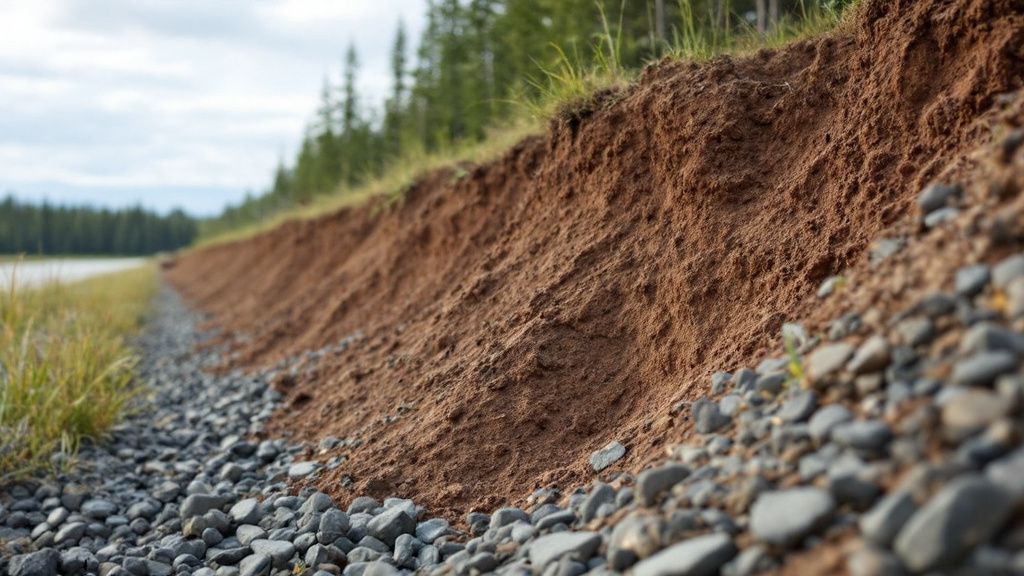
Erosion Control and Retaining Wall Solutions in Anchorage
When thinking about erosion control and retaining wall solutions in Anchorage, you must consider the unique landscape and challenges that the Alaskan terrain presents. Anchorage, with its stunning yet complex blend of soils and slopes, requires specially designed structures to effectively manage soil stability. Retaining wall installation is not just about aesthetics; it’s crucial to combating erosion and ensuring the longevity of your property amidst the rugged Alaskan environment. If you’re exploring how to build a retaining wall, consider the diverse materials and techniques suitable for Anchorage’s climate. Effective erosion control solutions often integrate natural materials with engineered designs, providing both functional and visually pleasing results.
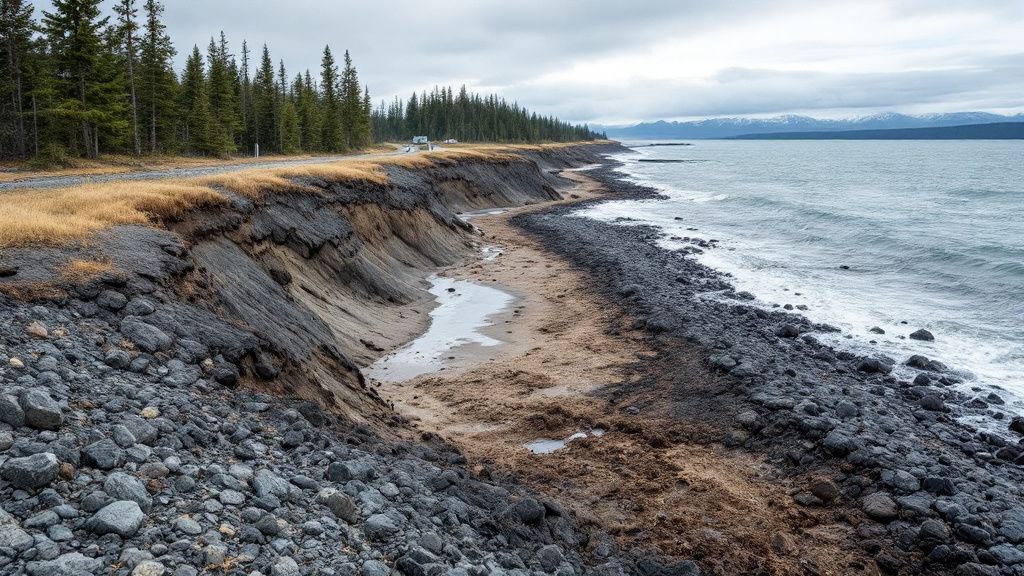
Understanding the Erosion Challenges in Anchorage
Erosion challenges in Anchorage are primarily driven by its unique geographical and climatic conditions. The city’s varied topography, coupled with heavy precipitation, often leads to increased soil movement and erosion. Anchorage’s natural beauty is both a boon and a challenge, requiring innovative erosion control solutions to protect properties and landscapes from degradation.
Seasonal changes, including freezing and thawing cycles, further compound these challenges. Erosion can jeopardize infrastructure, necessitating effective retaining wall installation strategies to prevent soil displacement. As a property owner, understanding these dynamics is essential for implementing solutions that not only stabilize the soil but also enhance the aesthetic appeal of your surroundings.
Looking ahead, Anchorage is likely to witness an increasing focus on sustainable land management techniques. A bold prediction is that comprehensive erosion control measures, integrating advanced technologies and eco-friendly practices, will become the norm. Innovations in how to build a retaining wall are expected to further aid in mitigating erosion, ensuring that Anchorage’s landscapes remain resilient against climate-induced changes.
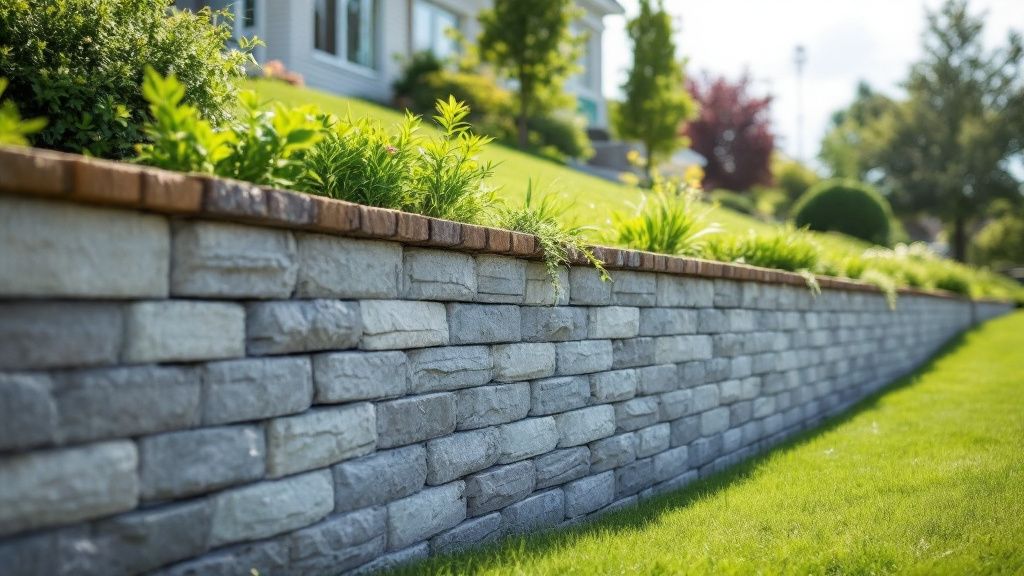
The Importance of Proper Retaining Wall Design
Proper retaining wall design holds significant importance in managing Anchorage’s unique erosion challenges. The city’s diverse landscape demands that retaining walls are designed with precision to address specific site conditions and soil types. A well-designed retaining wall serves not only as a functional necessity but also enhances the visual appeal of your property, integrating seamlessly with the natural environment.
While many believe that standard retaining wall installation techniques suffice, there’s a strong case for customized designs that cater to Anchorage’s specific climatic and geological conditions. Custom solutions take into account soil density, water drainage, and weather resilience, leading to more effective and durable erosion control solutions. These customized designs are essential for ensuring lasting effectiveness and stability.
Strong and properly designed retaining walls not only prevent soil erosion but also provide peace of mind. By investing in the right engineering and materials, you increase the value of your property and protect it against environmental stresses. Understanding how to build a retaining wall tailored to Anchorage’s unique requirements will ultimately aid in safeguarding the area’s landscape and infrastructure.
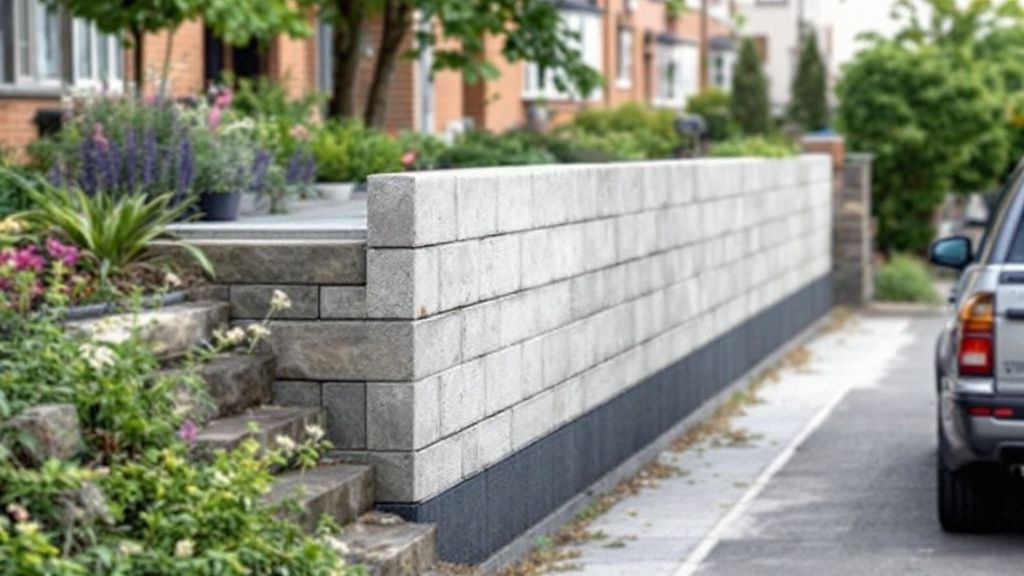
Types of Retaining Walls Suitable for Anchorage
In Anchorage, selecting the appropriate retaining wall type is crucial to effectively managing the challenges posed by its unique terrain. Gravity retaining walls, made from heavy materials such as stone or concrete, are a robust choice for supporting substantial soil loads. They rely on their sheer mass to hold back the soil, making them particularly suitable for Anchorage’s varied landscapes and intense weather conditions.
Reinforced retaining walls, which use materials like steel or geogrid for added strength, offer versatility in design and are ideal for steeper terrains or taller structures. These solutions combine the benefits of strength and flexibility, adapting well to Anchorage’s demanding topographical and meteorological characteristics. Understanding the intricacies of retaining wall installation for these structures is key to achieving optimal results.
To truly appreciate the potential of retaining walls in Anchorage, you need to shift your mindset from traditional methods to more innovative, customized solutions. Embracing a mindset shift toward creative use of materials and designs can open new avenues for solving erosion problems. By exploring how to build a retaining wall that integrates modern engineering with environmental considerations, you can effectively protect and beautify Anchorage landscapes.
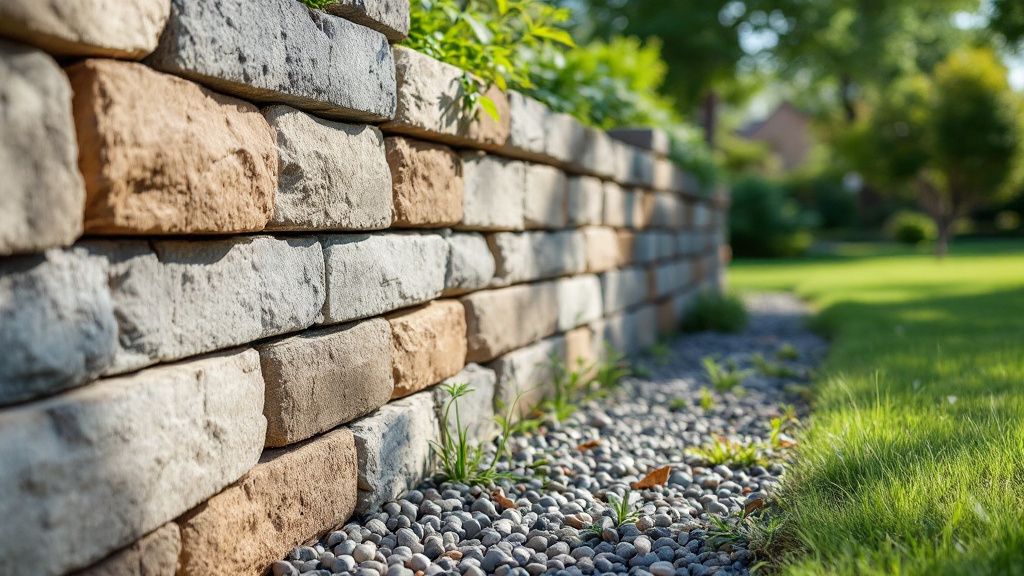
Selecting the Right Materials for Durability
Choosing the right materials for building retaining walls in Anchorage is vital to ensuring durability against the elements. Stone and concrete are commonly favored for their strength and resistance to harsh weather. These materials not only provide the necessary stability but also blend well with the natural surroundings. The selection process should focus on materials that can withstand the freeze-thaw cycles typical of Anchorage’s climate.
According to recent studies, the effectiveness of concrete in retaining wall installation is largely due to its compressive strength, which offers resilience against soil pressure and weather impacts. This scientific finding emphasizes the importance of material quality and composition when planning how to build a retaining wall capable of enduring Anchorage’s environmental stresses. High-density materials enhance longevity and performance in erosion control solutions.
While natural stone offers unparalleled aesthetic appeal, combining it with other materials like geosynthetics can offer added structural stability. These synthetic materials, embedded within the wall structure, improve overall durability and adaptability to ground movements. Integrating such materials with natural components offers a balanced approach, ensuring both the strength and visual harmony of the retaining wall design.

Construction Best Practices for Anchorage Landscapes
Building retaining walls in Anchorage requires adhering to construction best practices tailored for the local environment. Proper site assessment is crucial, as it determines the stability and safety of the retaining wall. Understanding the soil type, drainage patterns, and slope degree allows for customized design and execution. Accurate site evaluations form the backbone of successful erosion control solutions in the region.
Construction best practices also emphasize meticulous attention to drainage. Many issues with retaining walls stem from inadequate water management. Effective drainage systems, incorporating gravel backfills or drain pipes, prevent water buildup behind walls, reducing pressure and extending wall lifespan. Well-planned drainage is essential to avoiding costly repairs or failures later on.
To make the most of your retaining wall installation, try using tiered wall designs, which can dissipate pressure more evenly and adapt better to varying elevations. Tiered walls not only enhance the aesthetic appeal of the landscape but also improve functional outcomes. By understanding how to build a retaining wall that integrates these considerations, you can achieve long-lasting stability and beauty in Anchorage landscapes.
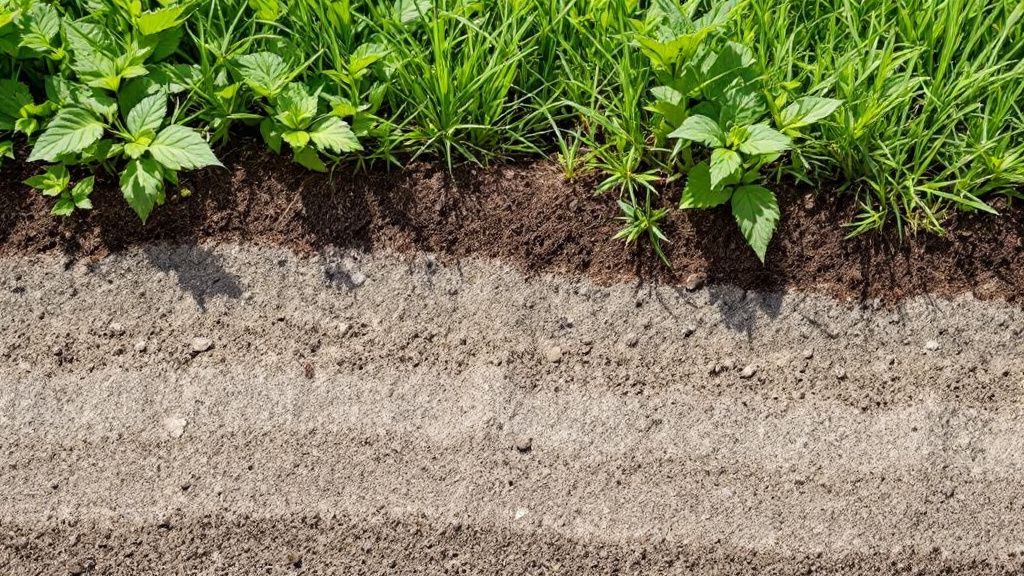
Common Erosion Control Techniques Employing Local Vegetation
In Anchorage, leveraging local vegetation for erosion control is a sustainable approach that enhances ecological balance while stabilizing the soil. Native plants such as alder, willow, and various native grasses play an integral role in anchoring the soil with their extensive root systems. These plants not only fortify the landscape against erosion but also support local biodiversity, creating a harmonious environment.
Employing local vegetation can also benefit retaining wall installations by complementing structural solutions with natural buffers. Establishing a vegetative cover reduces surface water runoff and soil displacement, proving especially effective on slopes and uneven terrains. The current state of erosion control in Anchorage shows a growing trend toward embracing these eco-friendly techniques, reflecting a larger global movement towards sustainable construction practices.
Trend analysis indicates that incorporating vegetation into your erosion control strategy is becoming increasingly popular. This trend encourages sustainable landscaping that can improve the resilience of retaining walls, making them a part of comprehensive erosion control solutions. By understanding how to integrate these practices with retaining wall installation, you create a robust defense against Anchorage’s challenging weather conditions while preserving natural beauty.